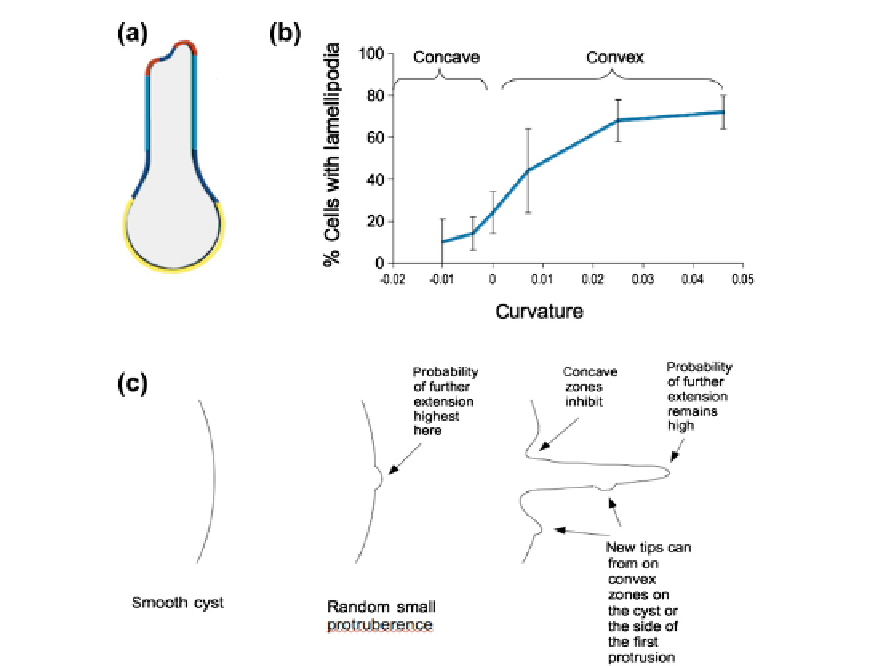Biology Reference
In-Depth Information
FIGURE 20.4
The effect of curvature on epithelial cell motility. (a) The greatly magnified outline of a printed
'island' on which cells are growing, with the frequency of cell motility on each curve expressed as a heat map
(blue
frequent). (b) The same data expressed as a conventional graph. (c) In a system with these
properties, a random small protuberance on the surface of an epithelium would increase its own probability of
growing, and this growth will both sharpen the tip, increasing the probability further, and create flanking concave
zones that are unlikely to advance. In this way, the cyst does not grow as a sphere but automatically breaks up into
branches. Credit for original data: Matthew King.
infrequent, red
¼
¼
of a cyst would be more likely to advance, making a more sharply curved protuberance,
increasing the probability of advance still further. What is more, cells flanking the protuber-
ance would find themselves on a concave surface and be especially unlikely to advance
(
Figure 20.4
c). In this way, there would be alternating sites of advance and non-advance;
exactly what is needed for a sphere to turn into a branched system. Along the new tubules
created, the system can repeat.
Celeste Nelson and colleagues have studied motile responses of mammary gland cells,
also derived from a branching epithelium, in shaped, confined culture systems. In this
case confinement was in vertical-sided wells in a collagen gel rather than on flat islands.
15
Again, cell motility was lowest at sites of concave curvature and highest at convex sites.
At the time, this effect was interpreted as being due to higher concentrations of autocrine
inhibitors such as TGF
b
secreted into the gels (if cells secrete a constant amount,

